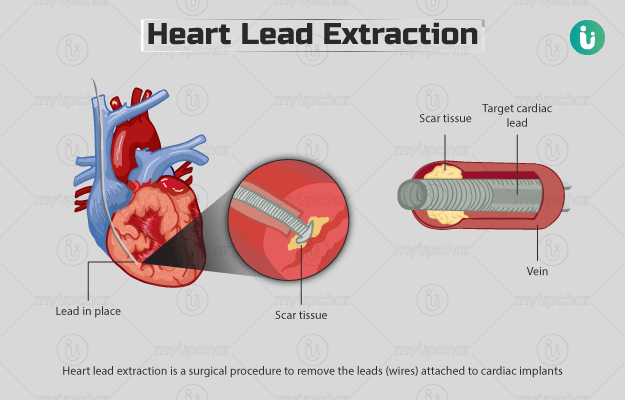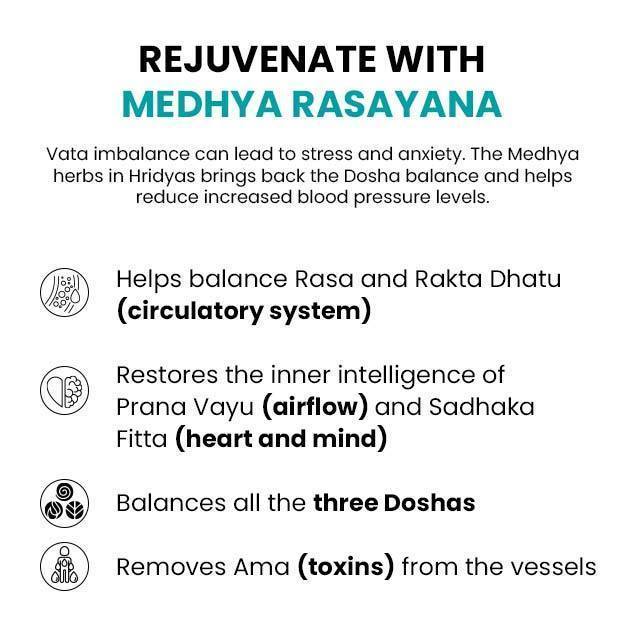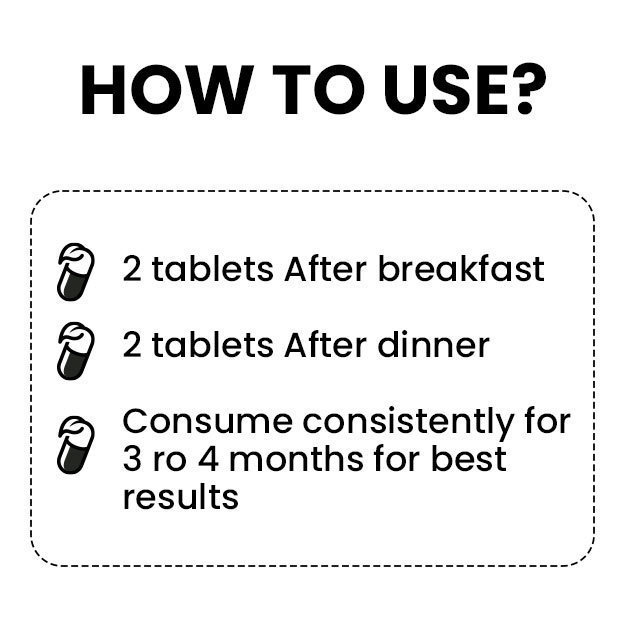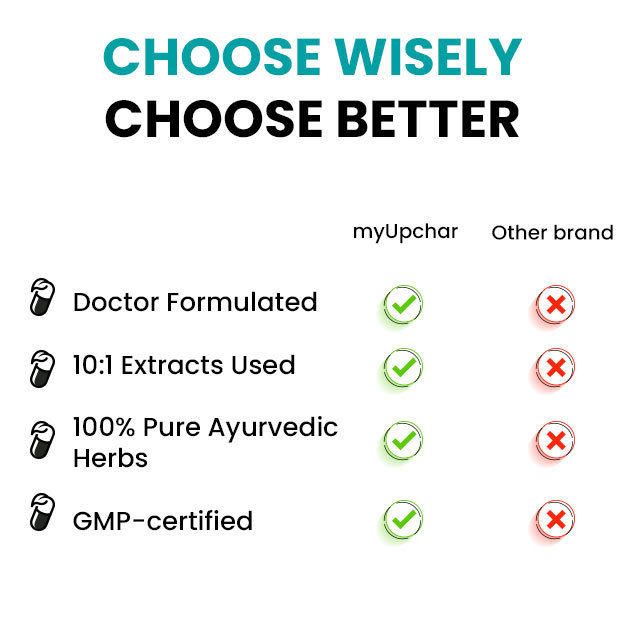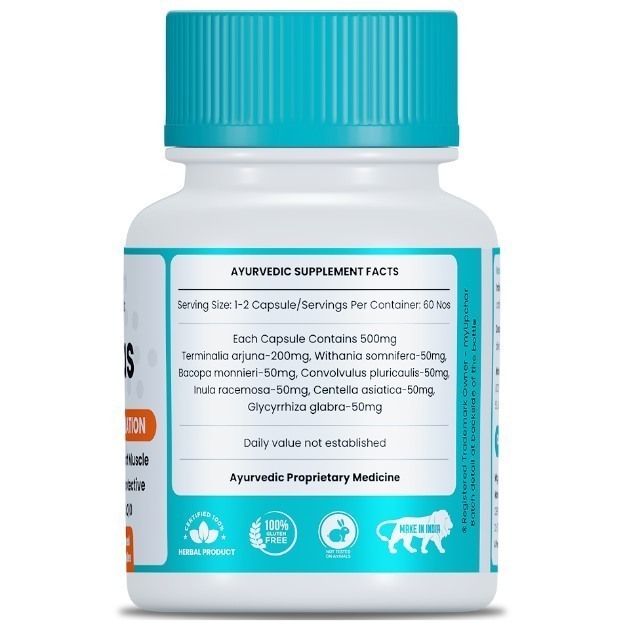Summary
Heart lead extraction involves the removal of a lead or wire from the heart that is inserted along with devices like a pacemaker or implantable cardioverter defibrillator. These leads carry electrical energy from the device to the heart. The procedure is done if there is an infection, scar formation or other problems in the tissue around the lead or due to malfunctioning of the lead.
Your healthcare provider will thoroughly evaluate your health before the procedure. You will need to fast from midnight before the operation. There will be a few restrictions in your routine and medications. The surgery will be conducted under general anaesthesia. Your post-surgery care will include taking medicines, care of the wound, and a few restrictions in activities.
- What is heart lead extraction?
- Why is heart lead extraction recommended?
- Who can and cannot get heart lead extraction?
- What preparations are needed before heart lead extraction?
- How is heart lead extraction done?
- How to care for yourself after heart lead extraction?
- What are the possible complications/risks of heart lead extraction?
- When to follow up with your doctor after a heart lead extraction?
What is heart lead extraction?
Heart lead extraction is a surgical procedure to remove the leads (wires) attached to cardiac implants like implantable cardioverter defibrillators (ICD) and pacemakers from the heart. These wires transmit electrical energy from a pulse generator (another part of the implant, a small computer with a battery and electric circuit) to the heart muscles. Thus, a pacemaker corrects the slowed heartbeats whereas the ICD stops the dangerously rapid heart rhythms. To perform this task, the lead needs to be directly touching the heart; therefore, leads usually enter the right side of the heart through a vein and are screwed to a muscle on the inside of the heart. Scar (fibrous) tissue is gradually formed near the leads, connecting them to the inside of the heart even more firmly. Leads can stay attached to the inside of the heart permanently due to their inherent design.
However, conditions such as infection or damage to the lead may necessitate the removal of the leads. As the amount of fibrous tissues increases over the years, this surgery can cause more damage to the heart and blood vessels. Hence, lead extraction within a few months of the implantation is preferred as it causes less damage to the heart and blood vessels.
Why is heart lead extraction recommended?
Your healthcare provider may opt for this surgery under the following conditions:
- Infection in the tissue near the lead or the device
- Damage or breakage of the lead (from inside or outside)
- Blocked veins due to scar tissues or clots
- Malfunctioning of the lead (protruding wire)
- To access the blood vessels to implant another wire
- Erosion of the device
- Presence of a large amount of scar tissue at the tip of the lead
- Failure to transfer electrical energy
- Pain due to the lead or device
- Complications such as abnormal heart rhythm caused by the lead
Who can and cannot get heart lead extraction?
The relative contraindications (surgery can be performed but with caution) to heart lead extraction include:
- Presence of calcification (calcium deposition) on the blood vessels inside the heart
- Formation of a mass (vegetation/tissue) on a lead
- Placement of the lead in the space around the heart instead of inside the heart
What preparations are needed before heart lead extraction?
Before undergoing this surgery, you will need the following preparations:
- Your healthcare provider may order a few diagnostic tests before the surgery. These include:
- Venogram - to see the veins around the device
- Electrocardiogram (ECG) - to check the heart rhythm
- Echocardiography (Echo) - to check the structure and function of the heart
- Blood tests - to check your overall health
- Tell your doctor about all the medications that you take, including prescribed and non-prescribed medicines, herbs, minerals, vitamins, and supplements.
- Your doctor will ask you to restrict the intake of blood thinners like aspirin or warfarin for a few days before this procedure.
- You will need to fast from midnight before the surgery.
- If you have to take a medicine just before the surgery, your doctor may suggest you to consume it with a minimum amount of water.
- Women should inform the healthcare provider if they are or could be pregnant.
- You must ask a friend or family member to drive you to and from the hospital.
- You will have to improve your lifestyle to ensure better recovery after the surgery. This includes smoking cessation at least for a few weeks after the procedure.
- You will have to sign an approval or consent form to grant permission for the surgery.
How is heart lead extraction done?
After getting admitted to the hospital, you will be asked to wear a hospital gown. The medical staff will position you on the operating table. You may have a pressure line in an artery (blood vessel that carries oxygenated blood) in the arm or groin and an intravenous (IV) line will be placed in a vein in your arm or hand to supply medicines and fluids during the surgery. The latter can be used as an access for insertion of instruments or supplementation of fluids. This procedure will be performed under general anaesthesia (to keep you relaxed and pain-free during the surgery). Someone from the medical team will shave the area of the operation and clean it with an antiseptic solution. The surgery will be done in the following way:
- The surgeon will make an incision (cut) on the left side of your chest (generally above the location of the implanted device (pacemaker/ICD).
- He/she will then remove the battery and disconnect your device from the lead.
- Next, the surgeon will then make a cut to insert a sheath (tube) inside a vein. This can be performed by the following approaches:
- Subclavian method: In this approach, a cut is made on the upper chest area to access the subclavian vein for this surgery.
- Femoral method: In this procedure, the femoral vein is accessed by making a small incision over the groin area.
- The surgeon will guide the tube to the upper part of the lead, where it is attached to the heart.
- With the help of a laser (attached to the sheath), he/she will remove the scar tissue formed over the lead. This helps in detaching the lead from the vein.
- Thereafter, the surgeon will remove the lead from your body.
- This is an image-guided procedure where a tool like a fluoroscopy (that shows continuous X-ray images on a monitor) is used to guide and monitor the procedure.
- Once the lead is extracted, the surgeon will carefully remove the laser and sheath.
- You may also have a new lead or an ICD/pacemaker placed based on your condition.
- After the procedure, the surgeon will close the incision and apply bandages on the operated area.
It will take two to six hours to complete the procedure. You will be taken to the recovery room after the surgery and your hospital stay may vary from two to 10 days. During your hospital stay, a nurse will monitor your vital functions, including your breathing and heart rate. If a femoral procedure is performed, you will be asked to avoid bending your leg for a few hours after the surgery. You will also be asked to take medications to prevent infection and relieve pain after the surgery. Your doctor will conduct an X-ray to check the function of your lungs and heart on the morning after the surgery. If a new device or lead is implanted, you may be allowed to go home on the day after your surgery.
How to care for yourself after heart lead extraction?
Once you are home, you will need to take care of yourself in the following manner:
- Medications:
- You must continue with your antibiotic course as prescribed by the doctor.
- The doctor may also advise a few painkillers to help you relax at home after the surgery.
- Wound care:
- Avoid the usage of soaps, powder, or creams over the incision site.
- You can shower after the surgery.
- Keep your wound clean and dry.
- Avoid wearing clothes that rub on the operated area for two to three weeks.
- Activities:
- Avoid lifting heavy things for a few weeks after the procedure.
- Do not lift your arm over the shoulder or strain the arm on the side of the new pacemaker for at least two to three weeks.
- Do not push, twist, or pull your arm for a few days following the operation.
- You may resume your routine work three to four days after the surgery.
When to see the doctor?
Visit or call your doctor immediately if you are experiencing the following symptoms:
- Fever
- Increased swelling at the incision site
- Fainting
- Chest pain
- Drainage or redness at the incision site
- Shortness of breath
- Hiccups that do not subside
- Dizziness
When to follow up with your doctor after a heart lead extraction?
Your doctor will schedule a follow-up appointment two weeks after the surgery to remove the stitches on the incision site.
Disclaimer: The above information is provided purely from an educational point of view and is in no way a substitute for medical advice by a qualified doctor.

